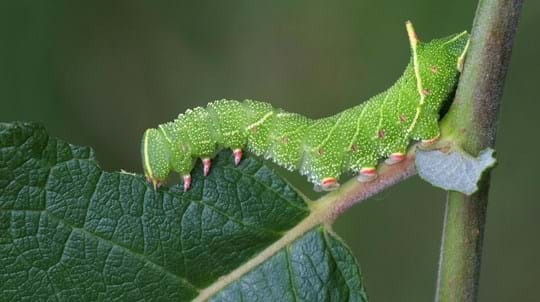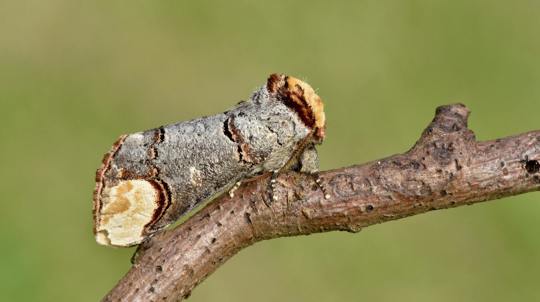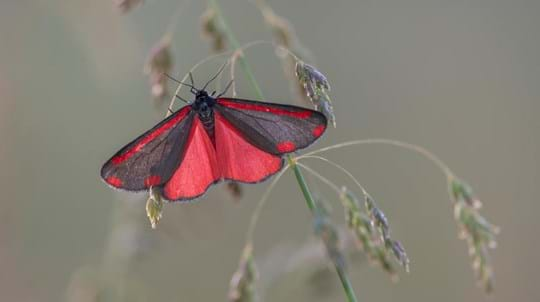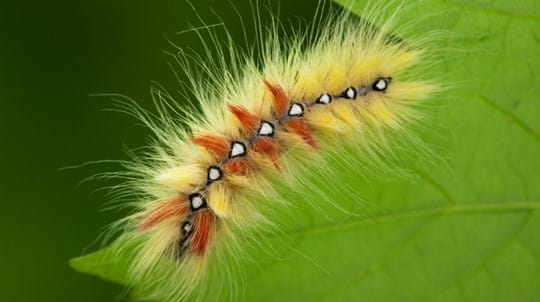
Credit: Andrew Newman Nature Pictures / Alamy Stock Photo
How do poplar hawk-moths breed?
Adults are on the wing and looking for mates between May and August. Females release pheromones which attract passing males and lay their eggs beneath leaves. Caterpillars hatch and feed between June and early October. They eventually descend to the ground to pupate and overwinter beneath the surface.








